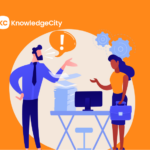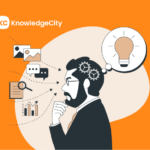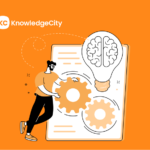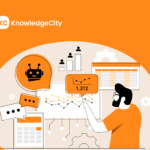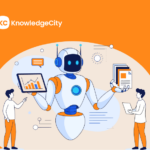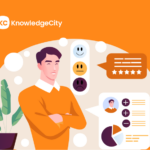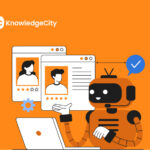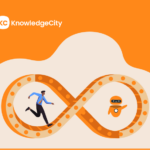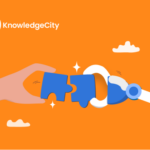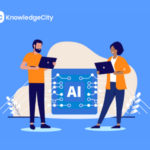On a Monday morning, a project manager opens a shared document that her team updated over the weekend. She notices comments that did not come from any team member. They came from an AI tool the team recently started using. Some suggestions are helpful. Others seem out of place. She pauses, wondering whether she should trust them or ignore them. Later that day, a team member asks her if the AI tool is tracking their work. Another wonders if they will be judged for not using it enough. The HR partner assigned to this team receives a request for guidance and realizes that the organization does not yet have clear rules for how people and AI should work together.
These moments are becoming common. HR and L&D professionals are receiving more questions, more concerns, and more expectations. Employees want clarity. Managers want support. Leaders want results. What used to be simple collaboration has turned into a mix of people, systems, preferences, and new habits that are still taking shape.
This is why organizations need updated teamwork rules. The foundations of teamwork remain the same, but the environment around them has changed. AI influences how people share information, how they manage tasks, and how they evaluate themselves. Without clear guidance, teams can feel overwhelmed, disconnected, or unsure about what is expected of them.
Below are the five new rules that help teams stay grounded, collaborative, and confident in the age of AI.
Rule 1: Teams Need Clear Human And AI Roles
One of the biggest challenges employees face today is uncertainty about when to use AI and when to rely on their own judgment. This uncertainty shows up in questions such as:
When this clarity is missing, teamwork becomes confusing. Employees hesitate to take responsibility. Others over-rely on automated suggestions. Some fear making mistakes, while others fear being replaced.
For example, AI often enhances creative generation, research support, and information gathering. Human judgment remains essential in decisions that involve ethics, nuance, interpersonal sensitivity, or context. HR and L&D professionals can help teams map out these boundaries with training, discussions, and simple guidelines. This helps employees approach AI with confidence instead of tension.
Clear roles also reduce confusion inside the team. When everyone knows where AI fits and where people lead, collaboration feels more predictable and stable.
Rule 2: Teams Need Transparency And The Ability To Override AI
Trust is one of the most important elements of teamwork. Now that AI participates in daily workflows, trust depends on transparency. Employees need to understand how AI reaches conclusions, what information it uses, and where it might be limited. When this understanding is missing, people may worry about accuracy or fairness. They may also hesitate to use the tool at all.
Equally important is the ability to override AI when needed. Employees must feel comfortable rejecting a suggestion without fear of judgment. This sense of control keeps responsibility where it belongs and encourages people to think critically instead of accepting whatever appears on the screen.
HR and L&D professionals can guide teams by offering simple practices, such as:
These steps help employees trust themselves first, then trust the tool. When people feel empowered, they use AI more responsibly and with more confidence.
Rule 3: Psychological Safety Needs More Attention Than Before
AI influences how employees feel about their abilities and future roles. Some worry that AI makes their skills less valuable. Others fear that their mistakes will be magnified. Some compare themselves to the speed of automation and wonder if they measure up.
This emotional shift affects teamwork. When people feel anxious, uncertain, or disconnected, they participate less openly. Questions go unasked, issues go unspoken, and collaboration loses its strength.
A recent study shows that psychological safety often declines when organizations adopt AI without clear communication and support. HR and L&D can protect teams by reinforcing psychological safety more consistently. This involves guiding managers to check in often, listen actively, and create space for honest conversations.
Useful questions include:
These conversations help normalize the learning curve. When people feel heard and safe, they are more willing to adapt and experiment.
Rule 4: Teams Need Continuous Feedback Loops For AI Collaboration
Traditional teamwork improves through communication, shared learning, and small adjustments. AI-supported teamwork requires the same structure. Many organizations introduce AI tools with the expectation of instant efficiency. In practice, performance improves when teams regularly review and refine how AI fits into the workflow.
Feedback loops allow employees to:
These loops do not need to be complicated. A team can set aside 10 minutes at the end of a week to reflect on what worked well and what created friction. Over time, these small discussions create large improvements.
Here is a simple view of how feedback loops strengthen collaboration.
| Stage | Team Benefit | Organizational Benefit |
| Surface issues | Employees feel supported and understood | Skill gaps become visible early |
| Adjust prompts or workflows | Work becomes smoother and faster | Errors and rework decrease |
| Validate improvements | Confidence grows inside the team | Reliable patterns emerge |
| Share best practices | Collaboration strengthens | AI adoption becomes consistent |
This process helps employees feel more in control. They are not adjusting to the tool. They are shaping how the tool works for them.
Rule 5: Governance Protects Teamwork And Reduces Confusion
Governance is often seen as a technical operational requirement, but in reality, it plays a direct role in how teams collaborate. When AI guidelines are unclear, people may feel unsure about what is safe or appropriate. They may worry about data, privacy, or misuse. This uncertainty affects communication and decision-making.
Clear governance provides stability. It helps employees understand what AI can and cannot be used for. It outlines expectations for accuracy checks, data handling, and reporting issues. It also protects employees from inconsistent standards or unclear workloads.
Effective governance includes:
When these elements are in place, teams feel supported and aligned. They know the rules and can focus on doing their best work.
Bringing All Five Rules Together
These five rules strengthen one another. Clear roles reduce confusion. Transparency supports trust. Psychological safety encourages open communication. Feedback loops improve accuracy and teamwork. Governance keeps everything stable and consistent.
For HR and L&D professionals, the message here is that teams cannot navigate AI alone. They need guidance, structure, and emotional support. When employees understand expectations and feel cared for, they adapt more quickly and use AI more responsibly.
AI is changing how teams work together, but the heart of teamwork is still human. People need clarity, trust, communication, and safety. With the right support, AI becomes a tool that lifts teams instead of overwhelming them.
Empower Your Team with KnowledgeCity, the Best Employee Training Platform in the USA
At KnowledgeCity, we support organizations as they navigate this new landscape. Our learning library includes 50,000+ premium training videos, covering essential human skills such as communication, collaboration, decision-making, resilience, and leadership. We also offer advanced courses that build employees’ AI literacy, prompt-writing abilities, critical thinking, and responsible use of AI in daily workflows.
This combination helps teams strengthen the human capabilities that matter most while gaining the confidence to work effectively with AI. With the right training, employees adapt to new solutions as they grow, contribute, and perform at a higher level.
Explore how KnowledgeCity can help your organization build teams that thrive in the age of AI.
Subscribe to Our Newsletter
Join 80,000+ Fellow HR Professionals. Get expert recruiting and training tips straight
to your inbox, and become a better HR manager.

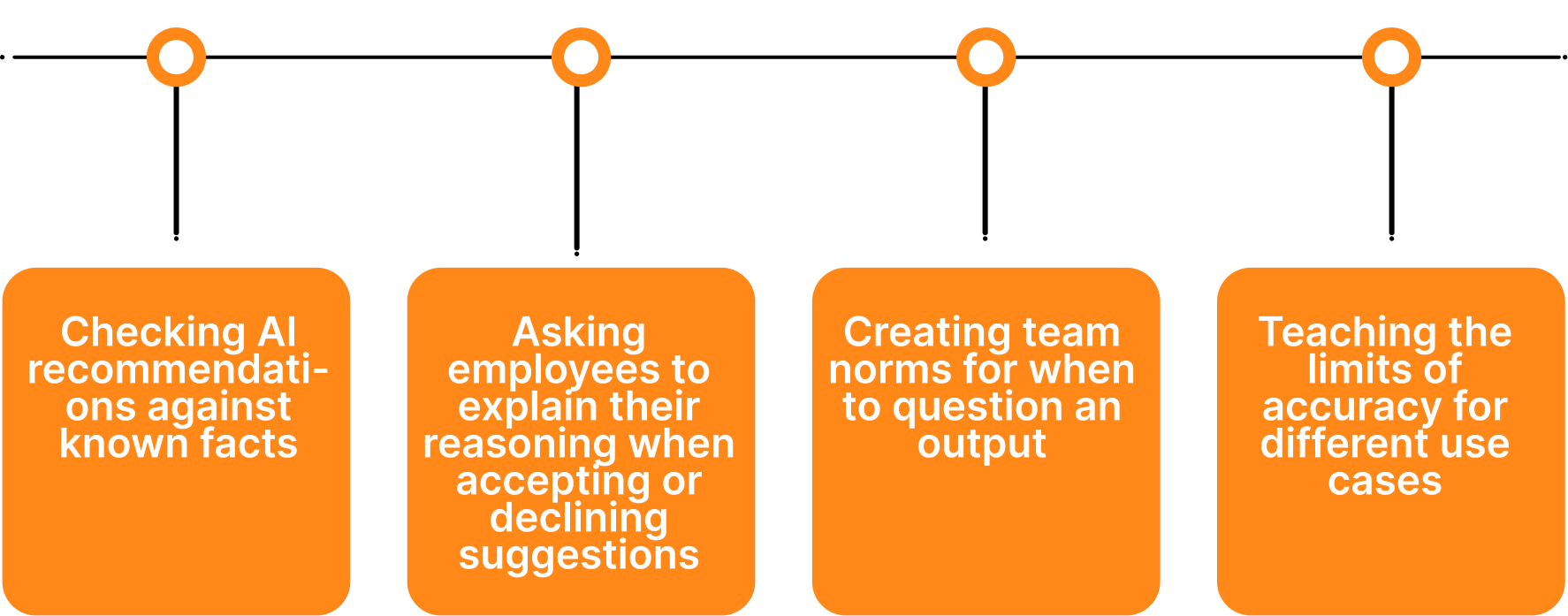




 KnowledgeCity
KnowledgeCity 